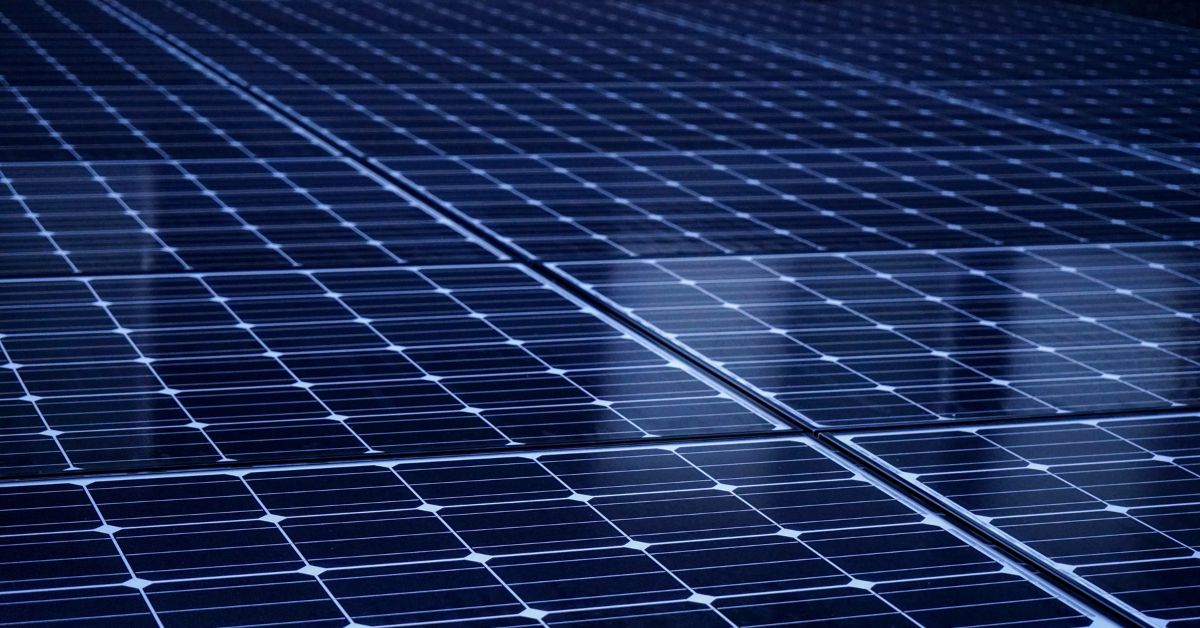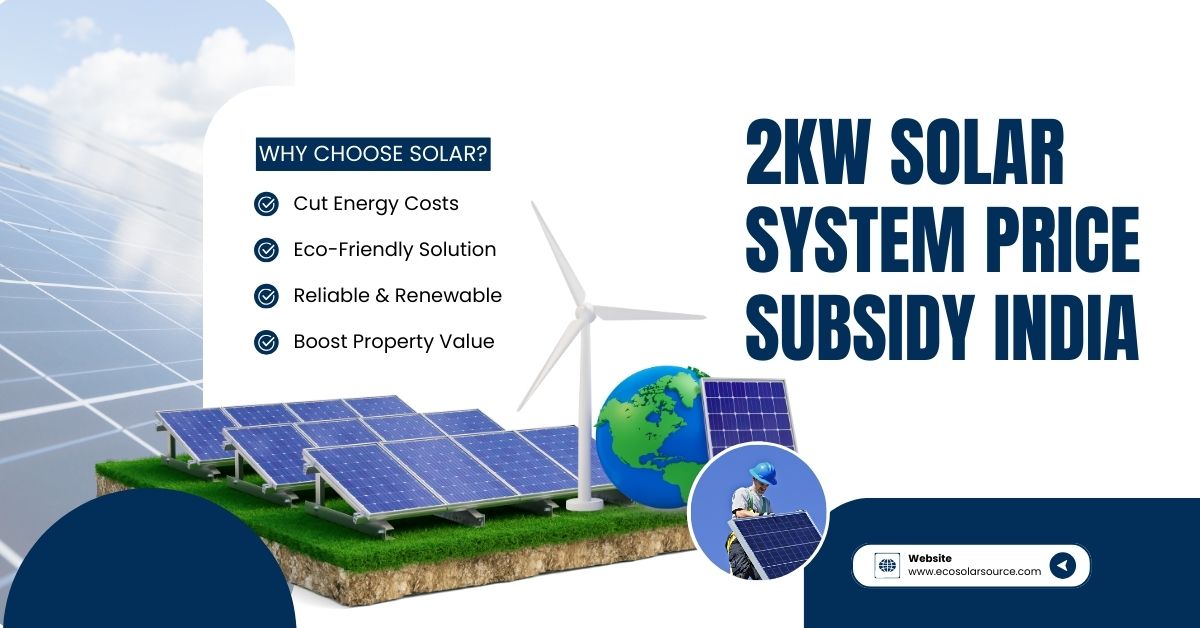2kw Solar System Price Subsidy India
The 2kw Solar System Price Subsidy India is a government-backed initiative aimed at promoting the adoption of renewable energy by reducing the cost burden on households. This subsidy helps lower the initial investment required to install a 2kW solar power system, making solar energy more affordable and accessible for homeowners.
With this incentive, households can generate clean electricity, reduce their dependence on grid power, and lower energy bills. The subsidy is part of India’s broader effort to meet its renewable energy goals, encouraging sustainable practices and contributing to a greener future for the nation.
Table of Contents
2kW Solar System Price Subsidy in India: Empowering Homes and Sustainable Living
India is witnessing a transformative shift towards clean energy, with solar power leading the charge. The country’s push for renewable energy has gained momentum in recent years, driven by a combination of rising environmental concerns, the need to reduce dependence on fossil fuels, and the declining cost of solar technology. One of the most popular solar installations for residential purposes is the 2kW solar system, which is proving to be an ideal choice for small to medium-sized households. With government subsidies available, adopting solar power has become even more attractive.
In this blog post, we will explore the details of a 2kW solar system, its cost in India, the subsidies available, the installation process, and the benefits it offers. We’ll also delve into the environmental impact and why adopting solar energy is a wise investment for the future.
What is a 2kW Solar System?
A 2kW solar system typically consists of solar panels capable of generating 2 kilowatts of electricity per hour when exposed to sunlight. This system is suitable for small to medium-sized households that have a moderate energy consumption level, typically ranging from 8 to 10 units of electricity per day.

A standard 2kW system includes:
- Solar panels: These convert sunlight into electricity.
- Inverter: This converts the direct current (DC) electricity generated by the solar panels into alternating current (AC) electricity, which is used by most household appliances.
- Mounting structure: This supports the solar panels on rooftops or other suitable locations.
- Wiring and other electrical components: These help in transmitting and distributing the electricity generated by the solar panels.
- Battery (optional): For systems that need energy storage, batteries can be included to store excess power for use when the sun isn’t shining.
The size of the system and its components may vary based on the household’s energy requirements, roof space, and local climatic conditions.
Cost of a 2kW Solar System in India
The cost of a 2kW solar system in India has been steadily decreasing due to advancements in technology, competition among manufacturers, and economies of scale. As of 2024, the price of a 2kW solar system without a subsidy in India can range between INR 1.2 lakhs to INR 1.8 lakhs, depending on the quality of components, installation charges, and location.
Here’s a breakdown of the typical cost components of a 2kW solar system:
- Solar Panels: INR 50,000 to INR 70,000
- Inverter: INR 20,000 to INR 40,000
- Mounting Structure: INR 10,000 to INR 20,000
- Installation and Wiring: INR 10,000 to INR 15,000
These prices can vary based on factors such as:
- Brand: The choice of solar panels and inverters from premium brands may increase the overall cost.
- Location: Remote areas may have higher installation costs due to transportation and logistics.
- Type of Installation: Ground-mounted systems may have different cost structures compared to rooftop installations.
Government Subsidies for Solar Systems in India
To encourage the adoption of solar energy, the Government of India provides subsidies under various schemes. The primary program for residential solar installations is the Rooftop Solar Scheme, which offers financial assistance to homeowners to install solar power systems. As per the guidelines of the Ministry of New and Renewable Energy (MNRE), homeowners can receive subsidies of up to 40% for solar systems of up to 3kW capacity.
Here’s a detailed look at the subsidies available for 2kW solar systems:
- Central Financial Assistance (CFA) or Subsidy:
- Capacity Up to 3kW: A 40% subsidy on the benchmark cost of the solar system.
- Capacity Between 3kW to 10kW: A 20% subsidy for the capacity beyond 3kW.
For a 2kW system, this translates to a subsidy of 40% of the total cost. If the benchmark cost for a 2kW system is INR 1.5 lakhs, the subsidy would be around INR 60,000. This brings the effective price down to INR 90,000.
- State-Specific Subsidies: Several states also provide additional subsidies or incentives to encourage solar adoption. States like Gujarat, Maharashtra, Rajasthan, and Tamil Nadu have solar programs that offer incentives to homeowners, further reducing the cost of installation.
- Net Metering Incentive: Under the net metering system, any excess electricity generated by the solar system can be fed back into the grid, and homeowners receive credits for this surplus. This not only reduces electricity bills but also promotes efficient use of energy.
How to Apply for the Solar Subsidy
Applying for a government subsidy for solar installations is a relatively straightforward process. Here’s how you can apply:

- Choose an Approved Vendor: To avail of the subsidy, you must purchase the solar system from an MNRE-approved vendor. These vendors follow the quality guidelines set by the government and ensure the system is installed as per the required standards.
- Apply Through the Vendor: The vendor will assist you in applying for the subsidy. They typically handle the paperwork and submit the necessary documents to the concerned authorities. The application process requires submitting proof of property ownership, electricity bills, and other relevant documents.
- Inspection and Approval: Once the system is installed, an inspection is conducted to ensure the installation meets the required standards. After successful verification, the subsidy amount is transferred directly to the vendor, and the homeowner pays the remaining amount.
Installation Process for a 2kW Solar System
Installing a 2kW solar system typically takes a few days, depending on the complexity of the installation and the availability of space. Here’s a step-by-step guide to the installation process:
- Site Assessment: The first step is a site assessment conducted by the vendor. They evaluate the available rooftop space, the direction and tilt of the roof, and any potential shading issues that could affect solar generation. They will also assess your current electricity consumption to ensure the system is appropriately sized.
- System Design and Approval: Based on the site assessment, the vendor designs a system that suits your home’s requirements. The design is then submitted for approval from the local electricity distribution company (DISCOM), which is a mandatory step before installation.
- Installation: Once the design is approved, the installation begins. The mounting structure is set up on your rooftop, followed by the installation of solar panels and inverters. Wiring is connected to your electrical system, and if you opt for a battery, it is also installed at this stage.
- Testing and Commissioning: After the installation is complete, the system is tested to ensure everything is working correctly. The vendor then commissions the system, connects it to the grid (if applicable), and sets up net metering if you choose that option.
- Post-Installation Support: Most vendors offer maintenance services to ensure your system operates efficiently. They may also provide monitoring solutions that allow you to track your solar generation in real time.
Benefits of Installing a 2kW Solar System
The decision to install a 2kW solar system comes with numerous benefits, both financial and environmental. Let’s the explore them in detail:
1. Reduced Electricity Bills
One of the most immediate benefits of installing a solar system is the reduction in electricity bills. A 2kW system can generate around 8 to 10 units of electricity per day, depending on the amount of sunlight available. For a household that consumes around 8-10 units per day, this can result in zero electricity bills. If the system generates more electricity than consumed, the excess can be exported back to the grid under the net metering policy, further reducing costs.
2. Government Subsidies
As discussed earlier, government subsidies make solar power systems more affordable. The financial assistance provided under MNRE’s Rooftop Solar Scheme can significantly reduce the upfront cost of a 2kW system, making it accessible to a wider range of households.
3. Return on Investment (ROI)
Solar systems offer an excellent return on investment (ROI). While the initial cost of installation may seem high, the savings on electricity bills, combined with government subsidies and incentives, can result in a payback period of just 3 to 5 years. After this period, the electricity generated is essentially free for the system’s lifespan, which is typically 25 years.
4. Environmental Benefits
Switching to solar power helps reduce your carbon footprint. By generating clean, renewable energy, you contribute to the reduction of greenhouse gas emissions and help combat climate change. A 2kW solar system can offset approximately 2.4 tons of carbon dioxide annually, which is equivalent to planting over 100 trees each year.
5. Energy Independence
Installing a solar system provides a degree of energy independence. By generating your electricity, you are less reliant on the grid, which can be particularly beneficial during power cuts or when electricity prices rise.
6. Low Maintenance
Solar power systems require minimal maintenance. The panels need to be cleaned periodically to ensure they operate at peak efficiency, and the inverter may need servicing after a few years. Other than that, solar systems are designed to be durable and long-lasting.
7. Increased Property Value
Homes with solar installations typically have a higher resale value. Buyers are willing to pay a premium for properties with lower energy costs, making solar systems an attractive investment for homeowners looking to sell in the future.
Challenges in Adopting Solar Power
While the benefits of solar power are significant, there are a few challenges that homeowners should consider:

- Upfront Cost: Despite subsidies, the initial investment can be substantial, which may deter some homeowners from adopting solar energy.
- Space Requirement: A 2kW system requires sufficient rooftop space, typically around 200 square feet. Households with limited roof space may struggle to accommodate the required number of panels.
- Weather Dependence: The Solar power generation is dependent on sunlight. Areas with frequent cloudy weather or monsoon seasons may experience reduced solar generation, though advances in technology are making solar systems more efficient even in low-light conditions.
- Maintenance: While maintenance is minimal, it is essential to clean the panels regularly to ensure optimal performance. Dust and debris can accumulate on the panels, especially in areas with high pollution or dust levels, reducing efficiency.
FAQs About 2kw Solar System Price Subsidy India
Q1. What is the typical cost of a 2 kW solar system in India after subsidies?
The cost of a 2 kW solar system in India can range between ₹90,000 to ₹1,40,000 before applying subsidies. With the government subsidy, the cost may be reduced by 30% to 40%, depending on the state and specific subsidy programs.
Q2. How much subsidy is available for a 2 kW solar system in India?
The Central Government offers up to 40% subsidy under the PM-KUSUM and Rooftop Solar Scheme. Some states may provide additional subsidies, potentially covering up to 50% of the total cost.
Q3. How can I apply for a solar subsidy for a 2 kW system?
To apply for a subsidy, you need to follow the procedures outlined by the Ministry of New and Renewable Energy (MNRE) or your state’s nodal agency. Generally, this involves selecting an approved vendor, installing the system, and submitting necessary documents like invoices and installation certificates.
Q4. Are all 2 kW solar systems eligible for subsidies in India?
No, only systems installed through MNRE-approved vendors and meeting specific technical standards are eligible for subsidies. The system should also be grid-connected to qualify for government support.
Q5. How long does it take to receive the solar subsidy after installation?
The subsidy is typically processed within 2 to 6 months of the system installation and approval, depending on the state’s processing speed and documentation requirements.
Q6. Can I get a loan to install a 2 kW solar system in India?
Yes, many banks and financial institutions in India offer loans for solar installations at attractive interest rates. Some schemes even have special provisions for solar financing under the Priority Sector Lending guidelines.
Q7. How much electricity will a 2 kW solar system generate in a day?
A 2 kW solar system in India can generate an average of 8 to 10 kWh (units) per day, depending on location, sunlight exposure, and weather conditions.
Q8. What is the lifespan of a 2 kW solar system?
Solar panels generally last 25 to 30 years with proper maintenance. Most manufacturers offer warranties of up to 25 years on the panels, while the inverter typically has a warranty of 5 to 10 years.
Q9. Can I install a 2 kW solar system without a grid connection?
No, to avail of the government subsidy, the solar system must be grid-tied. Off-grid systems, which include battery storage, are not eligible for the subsidy under current government schemes.
Q10. What are the maintenance costs for a 2 kW solar system?
Maintenance costs for a 2 kW solar system are minimal. You may need to spend on occasional cleaning and inspections, which can cost around ₹1,000 to ₹2,000 per year.
Conclusion: Solar Power is the Future
The 2kW solar system is an excellent option for small to medium-sized households in India. With government subsidies making the initial investment more affordable and the potential for significant long-term savings, adopting solar energy is a financially and environmentally wise decision. Not only does it reduce electricity bills, but it also contributes to a cleaner, greener future for India.
As the country continues to promote renewable energy through favorable policies and incentives, more households will have the opportunity to make the switch to solar power. The future of energy in India is undoubtedly solar, and the 2kW solar system is playing a crucial role in driving this transition.
A 2kW solar system in India represents a significant step towards sustainable energy, and with the government’s subsidy initiatives, it becomes an even more accessible and attractive option. These subsidies not only reduce the upfront costs but also accelerate the adoption of clean energy, contributing to national goals of reducing carbon emissions. By investing in a solar system, households can lower electricity bills, promote energy independence, and contribute to a greener future. The combination of subsidies and the long-term benefits of solar power make this a smart and impactful choice for energy-conscious consumers in India.
By investing in a solar system today, homeowners can enjoy energy independence, contribute to a sustainable future, and benefit from the long-term financial savings that come with harnessing the power of the sun.
Click here to learn more about the 2kw Solar System Price Subsidy India
Click here to learn more about 1kw Solar System Price in India

